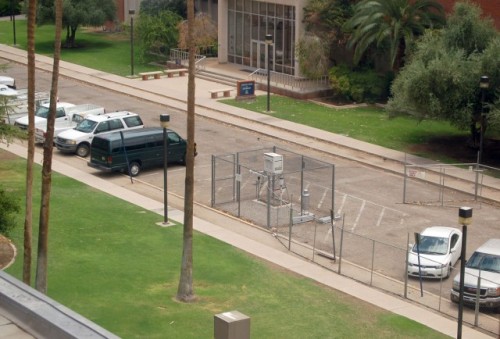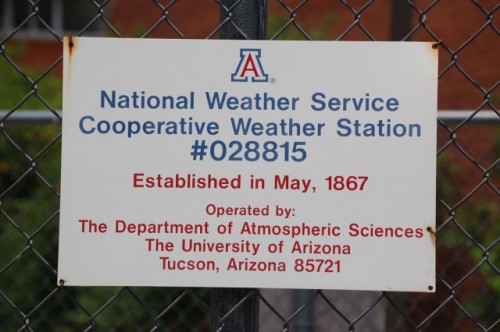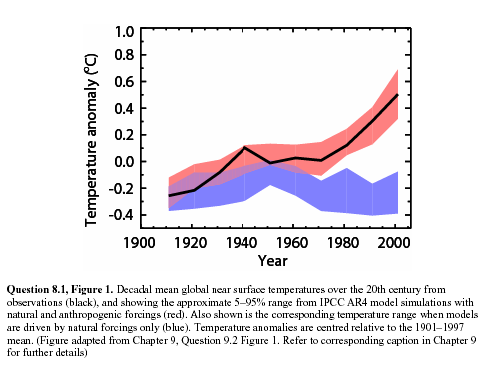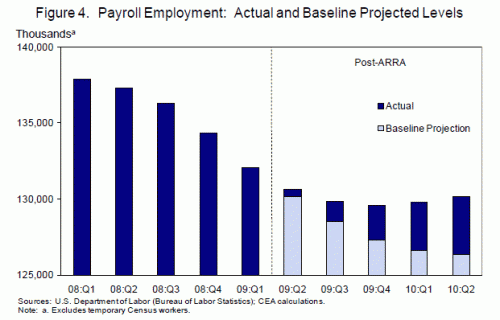I received this press release via email. The title is:
Carbon Dioxide Has Played Leading Role in Dictating Global Climate Patterns
OK, so I read.
Increasingly, the Earth’s climate appears to be more connected than anyone would have imagined. El Niño, the weather pattern that originates in a patch of the equatorial Pacific, can spawn heat waves and droughts as far away as Africa.
Now, a research team led by Brown University has established that the climate in the tropics over at least the last 2.7 million years changed in lockstep with the cyclical spread and retreat of ice sheets thousands of miles away in the Northern Hemisphere. The findings appear to cement the link between the recent Ice Ages and temperature changes in tropical oceans.
Apparently, I must not understand something. The study seems to trumpet as a huge finding that tropical ocean temperatures on Earth dropped at the same time that temperatures dropped in the upper latitudes and Earth experienced ice age glaciation. Uh, OK. Is it really surprising that when part of the Earth got much colder, other parts of the Earth got colder too.? Isn’t the simplest explanation that whatever made it cold in the poles made it cold at the equator too? Wouldn’t a solar change act this way?
The research team, including scientists from Luther College in Iowa, Lafayette College in Pennsylvania, and the University of Hong Kong, analyzed cores taken from the seabed at four locations in the tropical oceans: the Arabian Sea, the South China Sea, the eastern Pacific and the equatorial Atlantic Ocean.
The cores tell the story. Sedimentary cores taken from the ocean floor in four locations show that climate patterns in the tropics have mirrored Ice Age cycles for the last 2.7 million years and that carbon dioxide has played the leading role in determining global climate patterns. The researchers zeroed in on tropical ocean surface temperatures because these vast bodies, which make up roughly half of the world’s oceans, in large measure orchestrate the amount of water in the atmosphere and thus rainfall patterns worldwide, as well as the concentration of water vapor, the most prevalent greenhouse gas.
Looking at the chemical remains of tiny marine organisms that lived in the sunlit zone of the ocean, the scientists were able to extract the surface temperature for the oceans for the last 3.5 million years, well before the beginning of the Ice Ages. Beginning about 2.7 million years ago, the geologists found that tropical ocean surface temperatures dropped by 1 to 3 degrees C (1.8 to 5.4 F) during each Ice Age, when ice sheets spread in the Northern Hemisphere and significantly cooled oceans in the northern latitudes. Even more compelling, the tropics also changed when Ice Age cycles switched from roughly 41,000-year to 100,000-year intervals.
Again, so what? What am I missing here guys? Why is this astonishing? But the interesting part to me is that all the data is on developping a proxy for sea surface temperatures. Don’t know if it is accurate, but it seems a good endeavor. Fully worthwhile of the effort.
But remember the title. What about CO2? And through the article we keep getting teasers like this:
Based on that new link, the scientists conclude that carbon dioxide has played the lead role in dictating global climate patterns, beginning with the Ice Ages and continuing today.
And this
Candace Major of the National Science Foundation agrees: “This research certainly supports the idea of global sensitivity of climate to carbon dioxide as the first order of control on global temperature patterns,” she says. “It also points to a strong sensitivity of global temperature to the levels of greenhouse gases on very long timescales, and shows that resulting climatic impacts are felt from the tropics to the poles.”
All they did was develop a tropical temperature proxy and show the tropics got colder during ice ages. Duh. I mean, isn’t this really just a reality check — we developed a proxy and we think its pretty good because the temperatures drop right when we think they should. I kept waiting for the evidence that CO2 had anything to do with this. This is all I get, and comes not from their study but a link to data from a completely different data set having nothing to do with their study:
Climate scientists have a record of carbon dioxide levels for the last 800,000 years–spanning the last seven Ice Ages–from ice cores taken in Antarctica. They have deduced that carbon dioxide levels in the atmosphere fell by about 30 percent during each cycle, and that most of that carbon dioxide was absorbed by high-latitude oceans such as the North Atlantic and the Southern Ocean. According to the new findings, this pattern began 2.7 million years ago, and the amount of atmospheric carbon dioxide absorbed by the oceans has intensified with each successive Ice Age. Geologists know the Ice Ages have gotten progressively colder–leading to larger ice sheets–because they have found debris on the seabed of the North Atlantic and North Pacific left by icebergs that broke from the land-bound sheets.
“It seems likely that changes in carbon dioxide were the most important reason why tropical temperatures changed, along with the water vapor feedback,” Herbert said.
What? How does he determine this? My sense is that we are back to the old 800-year lag / ice core issue where scientists are confusing cause and effect between temperature and CO2 levels. I am willing to credit dropping CO2 levels (through ocean absorption) as a positive feedback effect, though I would argue that it is small just as they seem to argue that it is large. The key, though, is that nothing in their data supports a sensitivity number for CO2 at all, just a rough possible causal relationship where even the direction of the causation is unknown.
One fatal flaw of this argument is that while people can make an argument for CO2 as an amplifier (either weak or strong), no one can explain how it might trigger the beginning of an Ice Age or warming recovery, and without this there is no way to call CO2 the main driver of these changes. Maybe these guys have found the evidence of the trigger?
Herbert acknowledges that the team’s findings leave important questions. One is why carbon dioxide began to play a major role when the Ice Ages began 2.7 million years ago. Also left unanswered is why carbon dioxide appears to have magnified the intensity of successive Ice Ages from the beginning of the cycles to the present. The researchers do not understand why the timing of the Ice Age cycles shifted from roughly 41,000-year to 100,000-year intervals.
Oops, maybe not. But surely they understand the mechanism
“We think we have the simplest explanation for the link between the Ice Ages and the tropics over that time and the apparent role of carbon dioxide in the intensification of Ice Ages and corresponding changes in the tropics,” said Timothy Herbert of Brown University and the lead author of the paper in Science. Herbert added, “but we don’t know why. The answer lies in the ocean, we’re pretty sure.”
Oops, maybe not.
OK, as a public service, I will create a more truthful summary of the study:
Some clever scientists discovered a way to use the remains of marine organisms in core samples to develop a proxy for ocean surface temperatures over the last 2.7 million years. These temperature proxies seem to reality check well, dropping during exactly the periods we believe to have been ice ages. The reconstructed temperature record is not inconsistent with theories of high climate sensitivity to CO2, which, though the scientists did not actually study the problem, they felt the need to mention to get attention and funding.




